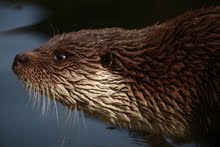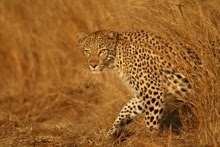Last week, BirdLife employees from all over Europe had a meeting in Absam to workshop, learn and discuss the Aren't Birds Brilliant programme. For those of you who don't know what this BirdLife programme is all about, it is essentially about encouraging regular people to come out to particular natural history spectacles and experience some of the wonder and beauty that fascinates us as birders - it is about sharing our passion and love for all sorts of experiences Mother Nature has blessed us with.
 Marco Brodde (DOF Denmark) photographing Alpine Chough
Marco Brodde (DOF Denmark) photographing Alpine Chough
Anyhow, it is with this wonderful bunch of people that I got to spend Saturday with, showing them just how brilliant birding in the Alps of Tirol can be.
Our first stop was Kühtai. 2020m above sea level and 1.5m of snow. A real Alpine winter wonderland. But boy was it cold - about 10 degrees below freezing, with a biting breeze. But the escapade in to the mountains paid off quickly with a glimpse of a couple of Alpine Chough disappearing over the rooftops. Fairly quickly, we heard an Alpine Accentor singing from a balcony, affording us wonderful views. As we were watching the Alpine Accentor, a flock of Alpine Chough treated us by alighting on the rooftop.
 Ken Smith (RSPB, UK) on the lookout...
Ken Smith (RSPB, UK) on the lookout... Digiscoping Alpine Choughs in Kühtai
Digiscoping Alpine Choughs in Kühtai Digiscoping the singing Alpine Accentor in Kühtai
Digiscoping the singing Alpine Accentor in KühtaiHeading off further in to town, we caught fleeting glimpses of the White-winged Snowfinches heading back to the area where they are fed with sunflower seeds. Getting back there, we managed to get incredibly views of a small flock of snowfinches feeding on the ground. It was great to get such a lovely look at such an beautiful and enigmatic Alpine bird species. The fact that 90+% of the birds had dark, black bills, and that there were only about 30 snowfinches about desipite the early hour and the light snow, suggests that they really have moved off to their high mountain territory areas.
 Orbán Zoltán (MME Hungary) and Mathew Capper (RSPB, UK) with the snowfinches
Orbán Zoltán (MME Hungary) and Mathew Capper (RSPB, UK) with the snowfinchesHeading back down the Sellraintal, I took the BirdLife group up to Lüsens for fantastic views of the Lüsenerfern Glacier. Besides the great views, we were hoping to pick up some of the other high-alpine species. Shockingly, the normally easily found Spotted Nutcracker did not want to be found (despite hearing them call a number of times). No sign of Ptarmigan, but wonderful views of a young Golden Eagle, and a dramatic fly-by by a huge white Northern Goshawk.
 On the stake-out for Spotted Nuthatch.
On the stake-out for Spotted Nuthatch. Looking up at the Lüsener Fern Glacier.
Looking up at the Lüsener Fern Glacier.We then headed down to Juifenau, where we finally got good views of Nutcracker, and picked up Willow Tit, Coal Tit, Great Tit, Greenfinch, Nutcracker, Blackbird, and Yellow Hammer, all feeding in a garden on the outskirts of the little village.
 Yellow Hammer in Juifenau.
Yellow Hammer in Juifenau.On our way to Ehnbachklamm (
the Wallcreeper stake-out), I saw some Chamois on the hillside near Martinswand and so wanted to stop for a couple of minutes so that the others can also see one of the Alps loveliest wild animals.
Fernando had a stern look on his face as he scanned the cliff behind the Chamois.
"The Eagle Owl is over there", he says.
No tonal inflection in voice.
Fixed action pattern reaction from birder. You can guess what it was.
"What?!"
A moment of silence as time bent.
And then, there it was. Sitting in a hole.
That made my day (and that of many others!)
 Eagle Owl at 180x magnification
Eagle Owl at 180x magnification At the Eagle Owl stake-out
At the Eagle Owl stake-outLeaving most of the group at Ehnbachklamm, Martin Capper (RSPB, UK) and I quickly dashed in to Innsbruck to get Joanna Kalinowska (OTOP, Poland) to the train station. There, we picked up a good 30 or so Crag Martins feeding over the Inn.
Joining the rest of the group in Ehnbachklamm, who had been searching for Wallcreeper, we learnt that the Wallcreepers were still playing hard to get.
We then headed out on a longer walk, hoping to pick up the shy Three-toed Woodpecker, Black Woodpecker and anything else we could come across. Heading all the way back to Brunntal Alm, we had plenty of time to soak in the peacefulness and beauty of the landscape. Three inches of fresh fluffy snow really gave the woodlands a lovely charm.

 In the Brunntal area, Zirl
In the Brunntal area, ZirlWe ended the afternoon with a breath-taking view over Zirl, and the mountains to the south.
Life in the mountains is hard!
Happy birding
Dale Forbes






















.jpg)



.jpg)








.jpg)


